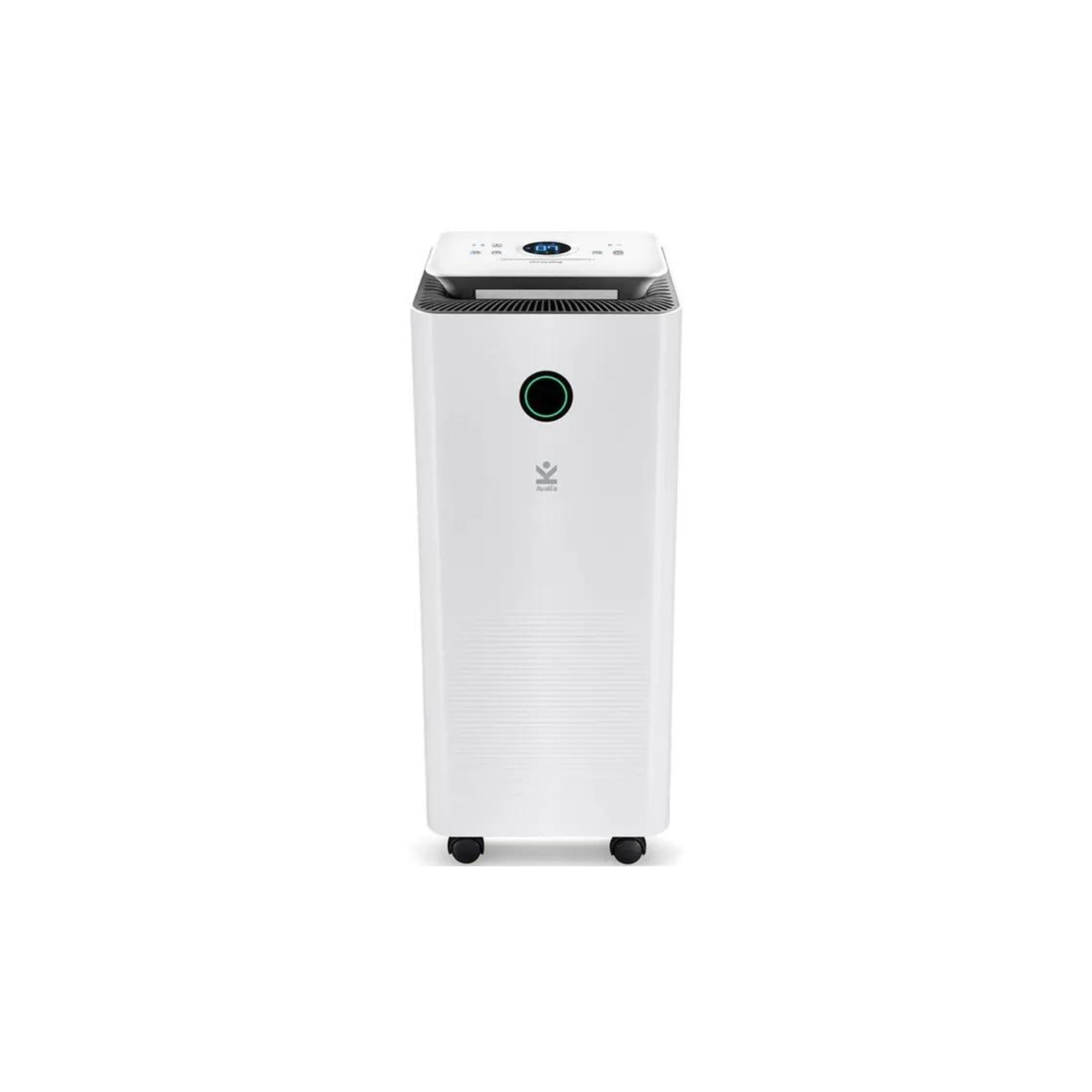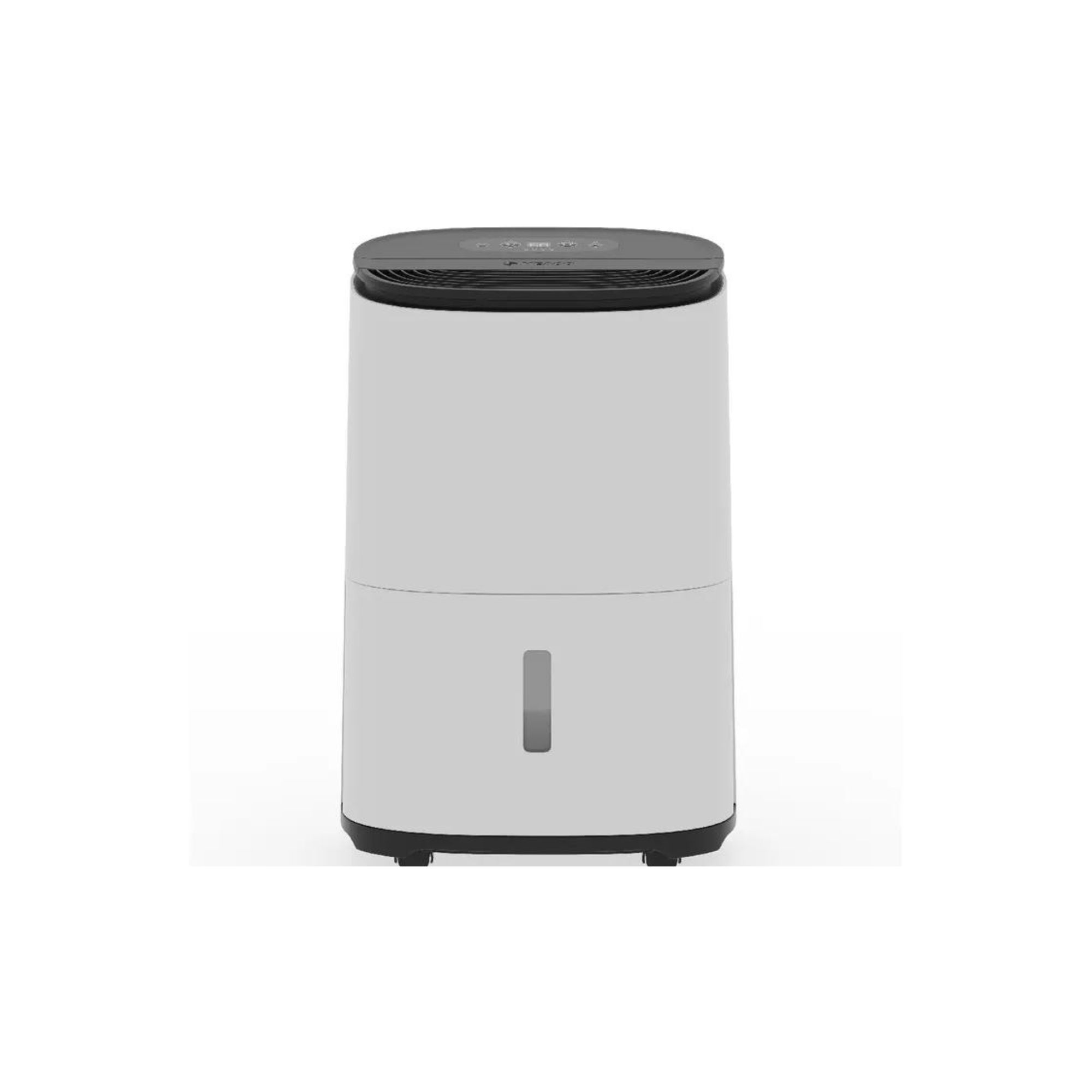Is a dehumidifier good for drying clothes? Experts reveal all
Great for reducing condensation, but is a dehumidifier good for drying clothes? We turn to the experts to get all the answers


Successfully drying laundry during colder months can become somewhat of a challenge. While tumble drying offers rapid results, running costs are currently at an all-time high, leaving many asking whether a dehumidifier is good for drying clothes as a cost-effective alternative.
The most obvious reason many experts will recommend investing in one of the best dehumidifiers is the effectiveness of reducing the humidity in your home. However, when it comes to doing laundry they can be one of the speediest and energy-efficient ways to speed up drying clothes indoors over the winter months.
"Over the coming months, wet washing will take longer and longer to dry indoors," explains Chris Michael, managing director of Meaco, the leading air purification specialists. "We start to close our windows to keep precious heat in and the moisture content in the air increases from the clothes that we have been drying over time." That's where a dehumidifier can help no end because it removes excess moisture in the air.
Is a dehumidifier good for drying clothes?
The good news is a dehumidifier can be a practical investment as well as an economical way to extract excess moisture and aid when doing the laundry. It's a great alternative to investing in one of the best heated clothes airers (which are wonderful too).
"Using a dehumidifier is an excellent tool to help dry clothes," states Chloe King, brand manager at Dulux. "Because a dehumidifier extracts moisture from the air, and as the air becomes less humid this will speed up the evaporation process on your damp clothing."
So in summary a dehumidifier is good for drying clothes as it will eradicate the increased moisture from wet laundry – because when drying damp clothes inside your home, especially on warm surfaces, the act will contribute to additional trapped moisture that then lingers in the air.
As we monitor our energy usage when running appliances and look for ways to keep homes warm without turning up the heating, knowing how to dry clothes indoors is probably more crucial this winter than ever before.
Sign up to our free daily email for the latest royal and entertainment news, interesting opinion, expert advice on styling and beauty trends, and no-nonsense guides to the health and wellness questions you want answered.

Explaining why using a dehumidifier in winter is beneficial for drying clothes indoors Chris says: "The only way to fully remove moisture without opening windows and turning the heating right up is to use a dehumidifier."
As mould and mildew can quickly build up due to excess moisture on walls and ceilings, a dehumidifier is the best way to prevent this from happening because an average-sized residential humidifier can collect up to 12 litres of water over a day, accommodating all sizeable washing loads.
Nothing noting that cleaning a dehumidifier properly will also ensure this must-have appliance is always working to its maximum potential.

Chris Michael is the expert co-founder of Meaco. Since its launch in 1991, Meaco has become a leading UK provider of air treatment products and the brand’s products have won a wealth of industry and design awards internationally.
What is the laundry mode on a dehumidifier?
Some dehumidifiers work better at drying clothes than others. Look for a model with a 'laundry mode' or 'clothes drying mode.' With this setting, the dehumidifier will filter out moisture and blow it back into the room at a warmer temperature on a higher fan setting.
Although the machine is working harder it still costs considerably less to run than a tumble dryer.
"The dehumidifier fan on laundry mode is key for helping your clothes dry quicker as it not only draws in the moist air, but it also pushes out air that is usually warmer than the room’s temperature," explains Sarah Dempsey at Myjobquote. "The high fan speed in addition to the warmer air that is expelled can help your clothes dry much quicker and more efficiently."
"The increased airflow also means that your dehumidifier will pull more air in as well. This ensures that all the extra moisture created by your washing is sucked into the machine and safely removed from the air."

The cool thing about dehumidifiers is that they can be used as a clothes dryer, which helps keep costs down. And this EcoAir dehumidifier is the best for drying clothes quickly. The Desiccant 8L features three drying modes and two laundry.

If you're looking for a dehumidifier that's large enough to hold at least 16L of water, sleek, space-saving, and will dry your laundry, the Avalla X-150 is your perfect match. Rated the overall best on our list, this machine left the air in our home clean and moisture-free.

The MeacoDry Arete One is an all-around great dehumidifier. It's simple, easy to use, great for families with little ones, and quiet. It even has a laundry mode, handling your home's moisture and wet clothes.
How to utilise a dehumidifier when drying clothes indoors
To make the most of the benefits from using a dehumidifier when drying clothes indoors the experts share their top tips to maximise efficiency.
1. Give laundry loads an extra spin

Help your dehumidifier do its job quicker by removing as much moisture as possible before attempting to hang your clothes out to dry indoors.
It's worth giving your clothes an extra rinse spin in the washing machine to remove excess water to encourage the fabrics to dry a bit faster.
Rebecca Bebbington, consumer expert at NetVoucherCodes warns of a major laundry drying mistake to avoid: "Never put your laundry on a hot radiator, I get why people do this but it actually increases moisture in the air which isn’t good and makes your dehumidifier work harder. Instead, try putting the clothes on an extra spin, space them out on the airer and make use of any natural light coming in.”
2. Dry clothes in smaller rooms
To make the most of the laundry mode on your dehumidifier try to dry your clothes on an airer in a compact space such as a utility room. Although they work anywhere in your home there is a best place to put your dehumidifier that will provide maximum efficiency when drying your clothes.
"Try and place your washing in a smaller room and shut the door so the air dries out quicker and therefore speeds up the clothes drying process," advises Chloe.
Although it's not exactly a dehumidifier mistake, if you want your close to dry probably opting for a small room instead of a large living room will make the world of difference.
3. Move appliance away from the walls
To achieve the shortest drying time ensure there is plenty of space around drying clothes for air to circulate, to speed up the process and also ensure the air stays at a balanced humidity.
"You might be tempted to fit as much as possible onto your drying rack, but this can actually prevent your clothes from drying properly and could lead to a damp smell. Ensure your laundry is spread out and avoid any overlaps." Adds Rebecca.
Avoiding these laundry drying mistakes will make sure your clothes are properly dry and not being damaged by the excess moisture. It will also help you stop mould from growing in your wardrobe as dampness can become a problem when you store your clothes.

FAQ
How long does a dehumidifier take to dry clothes?
There's no definitive answer to this question because it is a variable timeline, dependent on the model of the dehumidifier being used, the size of the room being used to dry the clothes, the size of the laundry load and whether the heating is on. All of these will impact the drying time. But as a general rule of thumb, you should allow a minimum of 6 hours.
"Position your clothes airer and then set up your dehumidifier so that it's end-on to the airer in a closed room. This way, the clothes will dry faster," says Chris. "We would expect these clothes to dry in a maximum of 6 hours using a dehumidifier laundry mode setting."
“Many dehumidifiers have laundry modes, which is a setting that sees the unit run for six hours at full speed. This is typically how long is required to dry an average load of wet washing," explains Chris. "The dehumidifier will then switch itself off to save electricity."
The smaller the space, the smaller the air volume, and the faster a dehumidifier can reduce the humidity in the room. When drying laundry, selecting as small a space to do so will enable the air to warm quicker, improving energy efficiency.
While it takes a considerably longer amount of time to dry clothes indoors with a dehumidifier than it would a tumble dryer a dehumidifier will make air drying time much faster and the air less clammy than it would without one.

Will a dehumidifier dry clothes in a cold room?
In the same way, you might not want to run your dryer, you are probably not using your central heating for as long as possible and the lack of heating can mean cold rooms and in some cases damp. So can you dehumidifier tackle both drying clothes and keeping the dampness away?
Nathan Paul, Ecommerce Director and Product Expert at Appliances Direct says, "While dehumidifiers can operate in colder temperatures, their performance may be slightly reduced. In cooler conditions, it's advisable to use a desiccant dehumidifier rather than a compressor model, as they work more effectively at lower temperatures."
"To optimise drying in a cold room, consider closing all windows and doors to contain the dehumidified air and use a dehumidifier with a dedicated laundry mode if available. Combine the dehumidifier with a fan to improve air circulation. If possible, introduce a small amount of heat to the room to enhance the drying process," he adds.
Is it cheaper to run a dehumidifier or tumble dryer?
In short, it is cheaper to use a dehumidifier to dry clothes rather than a tumble dryer but with energy costs varying wildly from one supplier to another, it's hard to say the exact costs. We asked our experts to explain the general outline of each cost, to help save energy in the home.
"The cost of running A tumble dryer depends on many variables," says James Longley, managing director at Utility Bidder. "The wattage of an item must be taken into account, as well as each household’s habits. That said, a 9kg heat pump tumble dryer - which is one of the most cost-effective types - uses 2.16 kWh for a full load. As a result, you’ll be spending 59p per cycle."
"Perhaps the most obvious benefit of using a dehumidifier over a tumble dryer is the reduced cost," says Chris. "A dehumidifier can cost as little as 4p an hour to run. This means that with every load you choose to air dry instead of putting in the tumble dryer, you’re saving.”
“Every 100 watts costs 2.7p/hour to run (based on UK electricity cost of £0.27/kWh). So as an example, a 500-watt dehumidifier will cost 13.5p/hour to run in the UK. A Meaco Arete® One 10L Dehumidifier costs 4p/hour as it runs at 151 watts. If you use one of these dehumidifiers for eight hours in a day, then that is 32p/day and £9.60 per month.”

James Longley is Managing Director and Founder of Utility Bidder, an award-winning business energy consultancy in the UK. He primarily manages supplier relations, as well as helping with new business opportunities. James has nearly two decades of experience under his belt in the energy sector, and has since expanded to launch the 'James Longley Group' in 2024 - where ambitious business owners can seek to maximise their growth with James' help.
Not only is a dehumidifier good for drying clothes as a measure of saving energy and keeping costs down, but it also helps with improving the air quality in the home, preventing condensation on windows, and tackling and preventing black mould which is all more likely to occur as a result of the dampness caused while drying laundry indoors. Win, win.
Rachel Homer has been in the interiors publishing industry for over 15 years. Starting as a Style Assistant on Inspirations Magazine, she has since worked for some of the UK’s leading interiors magazines and websites. After starting a family, she moved from being a content editor at Ideal Home to be a digital freelancer and hasn’t looked back.
- Tamara KellyLifestyle Editor
- Emily SmithDigital lifestyle writer
